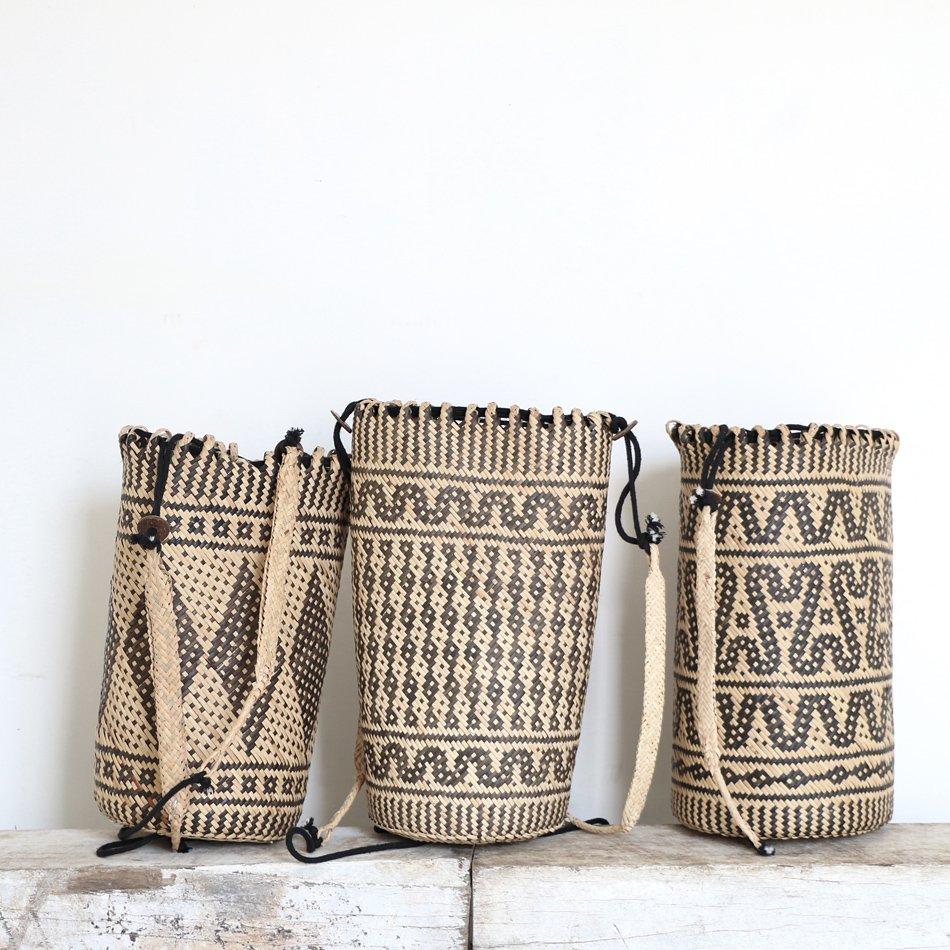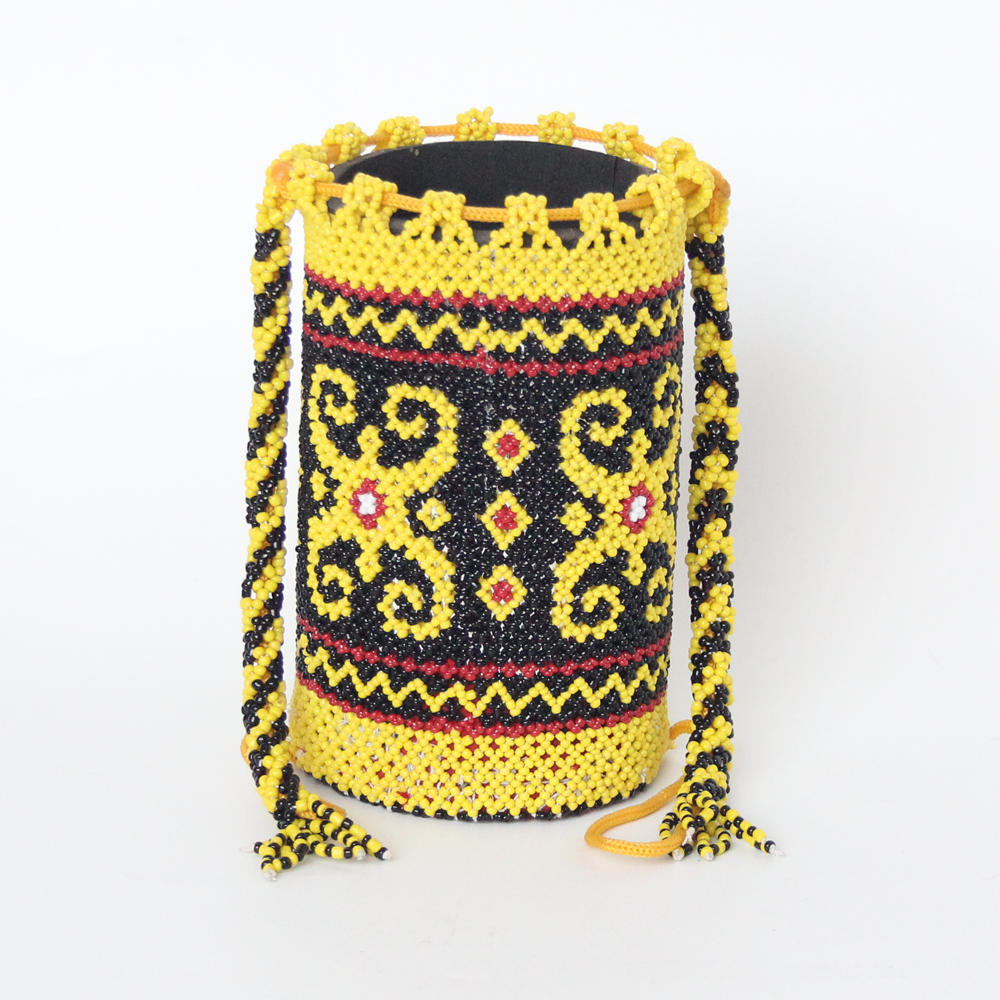This Anjat carrying basket, woven in East Kalimantan, Indonesia, is used every day for carrying light loads such as clothes, food, and other items—their version of our backpack and far more interesting. The basket is woven from strips of rattan skin, a very strong and pliable bast fiber. Starting at the top of the basket, the loops are integrated into the body of the basket for strength. The weaving technique uses black, made from a natural dye derived from soaking and boiling the rattan fibers in mud, leaves, and roots, and undyed rattan strips to create the motifs. The decorative motifs vary from basket to basket, and depict creepers, ferns, fruits, shoots and vines.

Basket weaving is primarily women’s work, most of whom are farmers by day and weavers at night and during the rainy season. It takes them several days to make a rattan basket from harvesting the rattan in the forest, drying it, cleaning, thinning, and preparing the strips into the desired widths and lengths, dyeing the fibers, and weaving the basket. Weaving time varies depending on the basket type and size, as well as the skill of the weaver, but on average it takes a half to two days per basket.
.jpg)
.jpg)
Massive deforestation of tropical forests and an increasing number of commercial plantation estates, mostly oil palm, hinders the local access to the fiber and dye plant resources needed for making the naturally-dyed baskets, hats, and mats.

The young people are leaving their villages for education and jobs in the large cities of Indonesia and Malaysia. They don’t have access to the dye and plant resources or the time to dedicate the many years required to learn the harvesting, dyeing and basketry techniques.

According to www.clothroads.com













